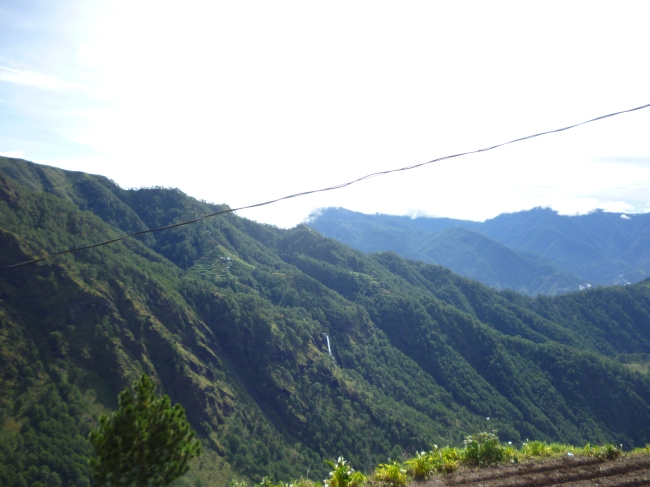HEAD HUNTING
Posted on: February 11, 2014
Normal
0
false
false
false
EN-US
X-NONE
X-NONE
/* Style Definitions */
table.MsoNormalTable
{mso-style-name:”Table Normal”;
mso-tstyle-rowband-size:0;
mso-tstyle-colband-size:0;
mso-style-noshow:yes;
mso-style-priority:99;
mso-style-parent:””;
mso-padding-alt:0in 5.4pt 0in 5.4pt;
mso-para-margin-top:0in;
mso-para-margin-right:0in;
mso-para-margin-bottom:10.0pt;
mso-para-margin-left:0in;
line-height:115%;
mso-pagination:widow-orphan;
font-size:11.0pt;
font-family:”Calibri”,”sans-serif”;
mso-ascii-font-family:Calibri;
mso-ascii-theme-font:minor-latin;
mso-hansi-font-family:Calibri;
mso-hansi-theme-font:minor-latin;
mso-bidi-font-family:”Times New Roman”;
mso-bidi-theme-font:minor-bidi;}
HEAD HUNTING BY OUR FOREFATHERS AND OUR GRANDCHILDREN
(Published by the Cordillera Today January, 2014)
Head hunting takes several definitions like a literal act of beheading before or after killing a person, moreover, a custom of cutting and preserving the head of enemies as a trophy by the killer. Head hunting is also a slang to mean an attempt of removing power and influence of political opponents.
However, in the management context, head hunting is a recruitment process of searching for the head or executives of corporation and organizations. There are several recruitment outfits calling themselves “Head Hunter” “head hunting” or similar words. This term also found its way into the music world as “Head hunter” is the title of an album of Herbie Hancock released by Columbia Records last October 13, 1973.
Head hunting was practiced in various countries as well as in ancient times most specially to display prowess of heroic fighters as well as martial arts combats. European headhunters were common among the Celts, West Germanic tribes, the Vikings, Scythians. The tribes of Melanesia, Papua New Guinea, Wa tribes of Burma China border, Borneo, Indonesia and other islands of South East Asia. Other Asians like the Japanese, China, and Taiwan have practiced head hunting and sometimes as raids. The Nagas of India and Burma as well as other tribes of India have practiced head hunting.
During the World War Two as well as in the Vietnam War, there were records that the heads of opponents were kept as “skull trophies” by the soldiers.
In the Cordillera Region of Northern Philippines, the men were described as warrior by early writers including Albert Henry Jenks in his book “the Bontok Igorots” published in 1905 and gave a vivid description of battles they undertook “Men go to war armed with a wooden shield, a steel battle ax and one to three steel or wooden spear. It is a man’s agility and skill in keeping his shield between himself and his enemy that preserves his life. Their battles are full of quick and incessant springing motion. There are sudden rushes and retreats even sneaking to cut off the enemy. These battles lasted about 30- minutes to an hour and often ceases after the taking of a single head by either side. But there were cases where fights last for half a day and a dozen or more heads taken. At times, rocks were thrown and sometimes hit and knock down enemies and there he loses his head if he was not assisted by friends. “
These battle skills were recorded when the Igorots fought against the Japanese. General Douglas Mac Arthur in his communiqué included “Hampered by the dense undergrowth and lost in the confusing maze of bamboo thickets, vines and creepers, the tankers would have been impotent had it not been for the aid of the Igorot troops of the 2nd Battalion, 11th infantry. Hoisted to the top of the tanks where they were exposed to enemy fire The Igorots chopped away the entangling foliage with their bolos and served as eyes for the American tank crew, firing with their pistols while guiding the drivers.
“When the attack was over,” said the General, “the remnants of the tanks and of the Igorots were still there, but the 20th Japanese Infantry Regiment was completely annihilated.
“Many desperate acts of courage and heroism have fallen under my observation on many fields of battle in many parts of the world. I have seen forlorn hopes become realities. I have seen last-ditch stands and innumerable acts of personal heroism that defy description. But for sheer breathtaking and heart stopping desperation, I have never known the equal of those Igorots riding the tanks. Gentlemen, when you tell the story stand in tribute to those gallant Igorots.”
My husband relates a story that happened in the 1950s as kids when; he and his brother Alex were spending their vacation in Alab. One night there was a commotion in the village because the men arrived from their head hunting. Some of the kids were afraid, but some of them found it as festivities for a bountiful harvest. They were told that the hunters took the jaws for their gong handles. When my husband asked his grand pa what happened to the other parts of the head, he was told that they were buried beneath the slabs of stones in the dap-ay. This brought chills and nightmares to some of the young kids sleeping in the dap-ay. But these were easily forgotten as they frolicked under the sun and bath in the rivers.
In the present day, head hunting may take some other form, though not as brutally killing the person, but making them “inutil” unable to function or stripping opportunities for opponents to exercise their responsibilities. This can take forms of boycotting people in authority. It could mean walking out of a hearing or a dialogue to incapacitate those who need to the consultation towards a resolution of an issue or a problem. Head hunters are in the social media with their irresponsible attack on people in authority without the facts or simply hunting them down blaming opponents with every problem that the community experiences. There are other strategies that have been developed in warfare including modern day head hunting.

Leave a comment